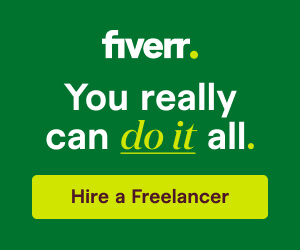When I first noticed the bounce rate on one of my websites creeping above 80%, I shrugged it off as “just how users behave these days.” People click, they scan, they leave. But the truth was, every percentage point in that number meant lost opportunities—visitors who never engaged, never explored deeper pages, and never converted. I had been spending time and money bringing people in through ads, social posts, and search, but they were slipping away in seconds. It wasn’t just frustrating—it was unsustainable.
I had gone down the rabbit hole of analyzing analytics reports before, but often got lost in the sea of numbers. So this time, I decided to strip the problem down to its simplest form: what was making people leave so quickly? I started looking at my site not as an owner, but as a stranger arriving for the first time. The first page they landed on needed to answer two unspoken questions instantly: “Am I in the right place?” and “Why should I stay?”
The deeper I dug, the more I realized the problem wasn’t my content—it was the experience. On desktop, my site was fine, but on mobile, it loaded slowly and the layout pushed the main message far down the page. I’d been so focused on aesthetics that I overlooked how frustrating it must have been for someone on a phone trying to get to the point. The main headline was buried under a large banner image and a few irrelevant widgets. Users had to scroll before they could even see the first paragraph. It sounds small, but when you’re competing for attention online, those extra seconds can be fatal.
That’s when I decided to make one quick change: I moved the key value proposition—headline, supporting sentence, and call-to-action—above the fold. This meant resizing or removing some graphics, shifting the layout, and ensuring that on both desktop and mobile, the visitor immediately saw what the site was about without scrolling. I also reduced the number of distractions near the top. No pop-ups in the first few seconds, no auto-playing videos, no unrelated ads. The idea was simple: give them exactly what they came for, right away.
To test the impact, I set up an A/B split. Half of the visitors would see the original design, and half would see the streamlined version. Within a week, the numbers told a clear story. The new version cut the bounce rate by more than 25%. More importantly, session duration jumped, and the number of pages viewed per visit went up noticeably. It wasn’t just that fewer people were leaving—it was that more of them were genuinely engaging.
I think what surprised me most was how quickly the improvement happened. I’d read countless articles about reducing bounce rate that suggested huge overhauls—redesigning the site, rewriting all the copy, changing the content strategy. While those things have their place, in my case, the biggest win came from a single, targeted tweak. It proved to me that users often leave not because they dislike the content, but because they never get to see it in time.
Another small but powerful element I added alongside this change was a subtle “Next Step” cue. Right below the opening paragraph, I placed a link or button leading to a highly relevant page—something that naturally continued the visitor’s journey. Instead of leaving them to decide what to do next, I was guiding them toward the next click. This kept the momentum going and reduced the likelihood of them hitting the back button.
What’s worth mentioning is that the bounce rate improvement also had a side effect on SEO. While Google has never officially said bounce rate is a ranking factor, lower bounces combined with longer dwell times send strong engagement signals. About two months after making the change, I started seeing certain pages climb in search rankings. I can’t claim it was entirely due to the bounce rate fix, but I believe it played a role.
Looking back, I realize this change worked because it addressed a core principle of user behavior: people want instant clarity. When they click, they expect confirmation that they’re in the right place and that what they’re seeing matches their intent. If your site makes them work for that confirmation, they’ll leave—no matter how good the rest of your content is.
Since then, I’ve applied the same principle to other sites I manage, each time starting with the most visited landing pages. In almost every case, simply moving the main hook above the fold and making it unmissable has produced a drop in bounce rate. It’s not glamorous, it doesn’t require complicated analytics setups, and it’s not a years-long project. But it works.
It’s tempting to think that solving big website problems requires big, dramatic fixes. My experience taught me the opposite. Sometimes, the real game-changer is a single adjustment that makes your value instantly clear to the people who matter most—the ones deciding in a split second whether to stay or go. And in a world where attention is the rarest currency, that split second is everything.








